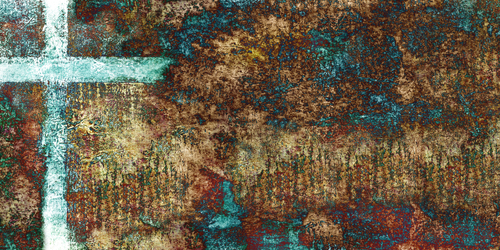Creativity abounds at many colleges throughout the country. This includes Christian colleges. Visual arts degrees are provided at the undergraduate and master’s levels, which includes Christian institutions of learning. Students have the option of majoring in career-wise studies, including photography and visual arts programs.
However, there are misconceptions about Christian schools in general, and the courses they offer to students in contemporary times. They can provide the same majors and services to students at art schools or universities, though in a more religious-oriented setting.
What Areas of Visual Art Can You Study at a Christian College?
If you would like to study visual art at a Christian college, you have many more options today than were available to Christian students twenty or thirty years ago, according to Huffington Post.
Christian colleges have experienced rapid enrollment growth since 1990. More than twenty percent of Christian colleges and universities in the United States offer visual arts programs, including studio art, photography, digital art, and more. However, some questions arise because of the differences in philosophy between traditional art programs, which use nude models and often encourage questioning of authority, and the values and practices that Christian colleges emphasize. Resource: Top 10 Christian College Visual Arts Programs 2018
Visual Art
Many colleges and universities that are members of the Council for Christian Colleges and Universities offer bachelor’s degrees in Visual Arts. The degrees may be referred to as Bachelor of Arts or Bachelor of Fine Arts. Traditional programs in visual arts provide education in design, composition, color theory. Hands-on classes include drawing, painting, sculpture, printmaking, and mixed media.
Graphic Design
Students who engage in graphic design degrees will learn to draw and sketch, but they also learn the principles and history of graphic design, illustration, logo design, and color theory. A graphic design degree is focused on working for businesses or other organizations, including churches, to develop materials for print, digital, and mobile technologies.
Photography, Digital Art, and Animation/Film
Artists can create beautiful images that exist only in digital form. Advancing skills in photography, digital artwork, and film/animation is a challenging field of creative study. Colleges need up-to-date software, well-equipped studios, and faculty who are experts in the fast-paced world of digital art, photography, and animation/film production.
Master’s Degrees in Art
Christian colleges and universities which offer master’s degrees in art blend Christian philosophy with skill and practice in the type of art a student wants to pursue as a career, whether as an art teacher or a practicing artist. To obtain a master’s degree in art, students must be familiar not only with contemporary art and techniques but also with the history and theory of their chosen field.
Several Christian colleges and universities offer post-baccalaureate degrees in art or design. The desire to study art and be an artist doesn’t have to conflict with a Christian-centered education and lifestyle. Many of history’s most famous works of art were created for Christian worship, such as the Sistine Chapel. You can blend your art and faith by selecting an art program at a Christian college that is right for you
Frequently Asked Questions
1. What are the similarities between Christian and art schools?
In most aspects, Christian colleges are identical to non-Christian schools. Students attend classes and learn the same courses at both. Each has lodging available on and off-campus, and most are accredited and held to the same standards by local and nationwide organizations. For most students, going to a university is a major event that precipitates changes, some of them unexpected. There’s a lot for them to take in, with additional steps recommended for anyone planning to attend a religious institution.
Visual arts at Christian college entails the same expectations as any art school. For example, many art schools work in art history courses required for undergraduates to finish their bachelor’s. The same applies to a graduate and a master’s degree. Each type of school harbors staff, instructors, and professors knowledgeable in fine arts. Apart from the religious requirements of courses, most students wouldn’t be able to discern the atmosphere of a Christian school from any other institution.
Another example is the materials students need or are provided at each. Most Christian colleges contain the resources for students to use everything from camera equipment, painting and drawing materials, and programs used to transfer their visual creations into digital works. Media and the acquisition of media to complete courses is important for students regardless of what college or university is being attended. But at Christian schools, they’re easy to obtain.
Additionally, a Christian and liberal art college can both harbor religious-based art history courses. Both offer students similar projects in various fields of study, with little to no restrictions on what students can do with their creativity. However, they both limit certain expressions of art that are deemed offensive to students, faculty, and staff per their ethics board.
2. Do Christian colleges offer lots of art-related extracurricular activities?
There is where Christian colleges, liberal arts schools, and universities are most similar to each other. Colleges are places for students to earn a degree in their desired field of study. To do that, a college must contain some level of activities for students to partake in, either on or off-campus. For this reason, many colleges, including Christian colleges, have clubs, meet-ups, and other art-based affairs for their students.
Even schools that aren’t renowned for their art majors usually contain extracurricular activities for students that involve visual arts in some manner. Since visual arts is a broad field encompassing many facets of education, its study and participation in it usually occur with most college attendees. This could be the creation of posters, banners, and other visual forms of communication by student-led clubs.
Many religious and political organizations created by students market themselves through digital medial. In this case, social media and students’ knowledge in creating artwork for their activities is commonplace. For a visual arts major, it opens the opportunity to get involves in all manner of extracurricular campaigns. These examples are mainstream among schools of all varieties, Christian colleges included.
Christian colleges have more extracurricular activities that focus on student’s religious studies. In this case, more faith-based organizations exist, including those centered on churches and the work performed by volunteers.
Churches are filled with activities that fit well with a visual arts major. Some of these are musical studies, performance art, and traditional visual arts talents like sculpting and painting. Graphic designers create banners and other insignia for clubs at Christian colleges, help design websites using vex illustrations.
From these activities, art students can put their skills to work in their everyday work, or even in courses that are unrelated to their primary major. There are a lot of productive ways that Christian colleges have for students to keep themselves occupied.
3. What roles do Christian colleges play in the art world?
Art and religion go hand-in-hand. Some of the first pieces of visual arts created by humans were done for their religious practices. History shows that Christianity has allowed creative people to express their ideas on canvas, with sculptures, in calligraphic writing.
Much of the historical artifacts of ancient times were preserved due to the efforts of the Christian church. Historical monuments, buildings, and other world-renowned pieces throughout civilization exemplify this. The Pantheon in Rome has been in continuous use as a place of worship since it was first built approximately two millennia ago. There are lots of other instances of this occurring, particularly with painting and sculptures.
Christian colleges are great places for students to hone their visual arts fields through the creation of works inspired by Rennaisance pieces. Visual art at Christian college places students in a environment that allows them to work in the same atmosphere as some of the major artists in human history.
They’re also a great place to study the preservation of art in all forms since historical churches and other places of worship are oftentimes old and in need of constant repair. A Christian college may contain religious courses that are exclusive to the study, creation, and restoration of church-related works.
4. What Christian-related careers are associated with a fine arts degree?
Find almost any career path, one can associate it with a fine arts degree from a Christian college.
Some careers may not be related to visual arts at all but could be a deciding factor on landing a job in a particular profession. But for Christianity, jobs abound. One of these is careers with a church or other religious body. For modern churches to function, people are needed with experience and academic degrees in digital marketing, music, and the creation of media.
There are religious television programs, events coordinating organizations, and web developing tasks that work with visual arts to some extent. Since Christian colleges maintain the same expectations for course work like any other college or university, experience in these fields is taught to their students.
For instance, an undergraduate majoring in a visual arts degree may take courses in web development, programming, or digital marketing. These are courses capable of being worked into the requirements by employers looking for game designers or developers in general.
5. Does the study of art history and Christianity intertwine at Christian colleges?
Yes. Christianity has always been associated with the creation of fine art from all media. Most recently, Christian schools teach students the skills needed to work with programming and the talents that visual arts can provide them to create innovative websites, books, applications, and other tools used by religious institutions. But for art history, the study has existed in Christian schools for a very long time.
In many ways, Christianity was the driving force that inspired much of the modern art showcased in galleries and other installations today. Painters from many countries, both past and present, use famed Christian symbols and figureheads to express their talents that were taught to them at Christian schools. For the religious-minded visual arts major, the college experience, along with other peers and faculty sharing their beliefs is a great atmosphere to influence the creation of artwork, drawings, graphics, and other tangible media.
6. What should prospective students look for in a Christian college when pursuing an art degree?
As stated, higher education is a major turning point for students, no matter where they enroll. For a student to get the most out of college, careful preparation should be done to ensure that the focus remains on their education. For the student anticipating to attend a Christian college under a visual arts major, it’s suggested that students find one that offers a bachelor’s and masters without the need of a transfer. This is to provide the student an easier transition from undergraduate the graduate-level courses, without taking away the experience of them attending on Christion institution.
Another is through becoming informed on the facilities offers to visual arts majors. Art students typically need galleries and studio spaces to exhibit their work. To find this out, a visit to the campus might be necessary. Other exhibitions required could be stages for performance art or an art department for the creation of media.
Another is for students to find a Christian college under their preferred denomination. It’s recommended for attendees in general, not just visual arts majors. Since Christianity has several major denominations, colleges are available for Protestants, Catholics, Methodists, Presbyterians, and Latter-Day Saints. However, there exist non-denominational Christian colleges as well.
Many Christian schools with good art programs will end the undergraduate and graduate’s terms with an exhibition of the work they’ve done throughout their time at the institution. Potential students must understand what this entails. And lastly, religious courses should be expected as a requisite to completing their degree.
Finding the Right Christian College for the Talented
Visual arts is a great way for a student to hone in on their talents while discovering new ones they may have thought didn’t exist. Colleges have evolved to take in more courses for these students. A standalone art school is no longer required to obtain a visual arts degree, and courses are commonplace at schools nationwide.
Christian colleges have everything that visual arts majors need, harboring staff and facilities with everything related to the art world. There are bachelor’s and master’s courses to gain with visual art at Christian college. And in many schools, there’s no need for undergraduates to transfer for the completion of any graduate-level courses.
Related Resources:



